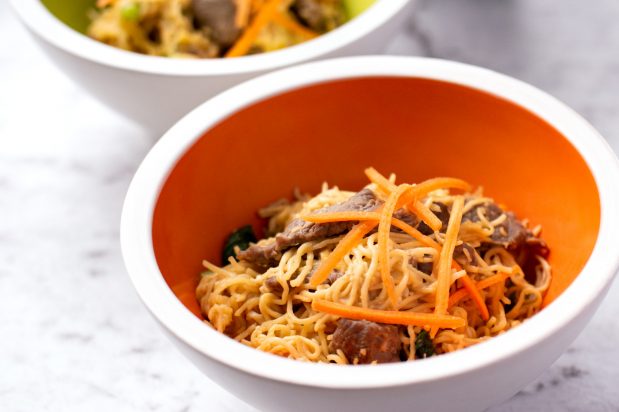Vietnamese Egg Noodles: A Flavorful Delight
Vietnamese cuisine is known for its diverse range of dishes, with each region offering unique flavors and culinary traditions. One popular Vietnamese dish that has gained international acclaim is Vietnamese egg noodles. These delicious noodles, often referred to as "mi" in Vietnamese, are a staple in many Vietnamese dishes and are loved for their versatility and taste. In this article, we will explore the origins, ingredients, cooking methods, and popular Vietnamese dishes featuring egg noodles. Let's dive in!

Stir Fried Vietnamese Egg Noodles
1. Origins of Vietnamese Egg Noodles:
Vietnamese egg noodles have a rich history that can be traced back to China.
It is believed that the Chinese immigrants brought this noodle variety to Vietnam, where it quickly became an integral part of the local cuisine.
Over time, Vietnamese chefs adapted the noodles to suit their unique taste preferences, resulting in the creation of Vietnamese egg noodles as we know them today.
2. Ingredients Used in Vietnamese Egg Noodles:
The key ingredients in Vietnamese egg noodles include wheat flour, eggs, salt, and water.
The combination of eggs and wheat flour gives the noodles a distinct yellow color and a rich, chewy texture.
The salt enhances the flavor, while water is added to bind the ingredients together. Some variations may also include tapioca starch or cornstarch to achieve a smoother consistency.
3. Cooking Methods for Vietnamese Egg Noodles:
Vietnamese egg noodles can be prepared in various ways, depending on the dish being cooked.
Here are three common cooking methods:
a. Boiled:
In this method, the noodles are cooked in boiling water until they become soft and tender. They are then drained and rinsed with cold water to remove any excess starch, ensuring they don't stick together.
b. Stir-fried:
Stir-frying is another popular method used to cook Vietnamese egg noodles.
The noodles are first boiled briefly and then stir-fried with a combination of vegetables, meat, and sauces to create a flavorful and satisfying dish.
c. Soup-based:
Vietnamese egg noodles are commonly used in soups, such as pho or egg noodle soup.
The noodles are boiled separately and then added to a flavorful broth along with other ingredients like meat, vegetables, and herbs.
4. Popular Vietnamese Dishes Featuring Egg Noodles:
a. Mi Xao Don (Crispy Egg Noodles):
This dish features deep-fried egg noodles topped with a savory stir-fry of meat, seafood, and vegetables.
The contrast between the crispy noodles and the flavorful toppings makes it a favorite among Vietnamese food enthusiasts.

Crispy Egg Noodles
b. Hu Tieu Mi (Mixed Egg Noodle Soup):
Hu Tieu Mi combines both rice noodles and egg noodles in a clear, flavorful broth.
It is typically garnished with a variety of toppings, such as pork, shrimp, squid, and fresh herbs, creating a satisfying and wholesome dish.
c. Bun Thit Nuong (Grilled Pork Noodle Salad):
While not a traditional noodle soup, this dish showcases Vietnamese egg noodles in a refreshing salad.
Grilled pork, fresh herbs, pickled vegetables, and crushed peanuts are mixed with the noodles, creating a delightful combination of flavors and textures.
5. Nutritional Benefits:
Vietnamese egg noodles are a good source of carbohydrates, protein, and essential nutrients.
They provide energy, aid in digestion, and help maintain healthy body functions.
However, it is important to consume them in moderation as part of a balanced diet.
Vietnamese egg noodles are a versatile and delicious ingredient that adds depth and texture to Vietnamese cuisine. Whether boiled, stir-fried, or used in soups, these noodles offer a unique dining experience. Their popularity continues to grow both in Vietnam and around the world. So, the next time you explore Vietnamese cuisine, be sure to savor the taste of Vietnamese egg noodles in all their delightful forms!